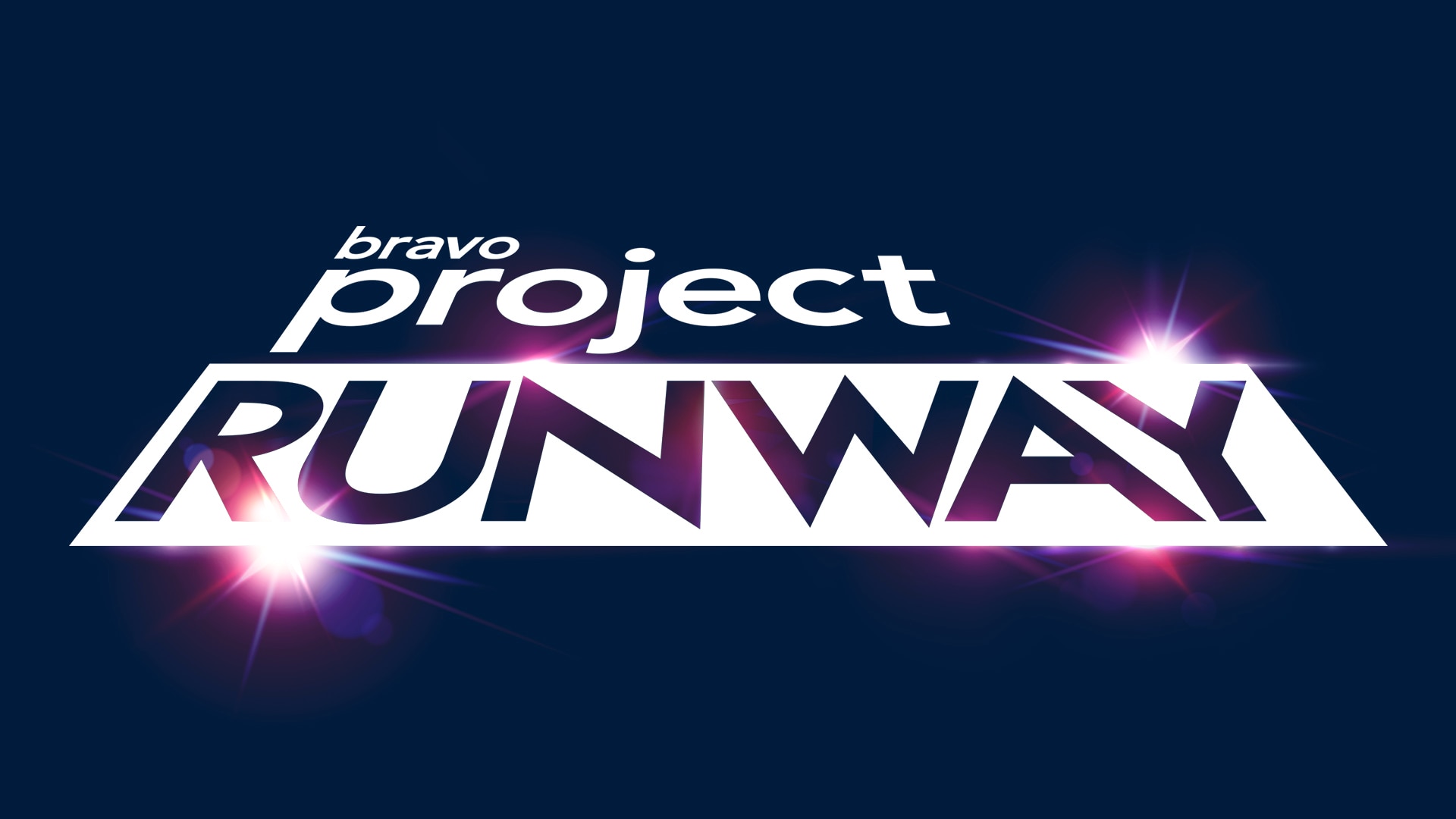Exploring The Unexpected: What 'Project Runway Cummins' Could Mean For Innovation Today
Have you ever stopped to think about the really unusual pairings that could spark something completely new? It's kind of fascinating, isn't it, when two very different worlds bump into each other. We often see innovation pop up in places we just didn't expect, you know, like when a fashion show meets the power of an engine company. That's the sort of curious idea that gets us thinking about "project runway cummins" and what such a unique concept might actually involve for us all.
It's a bit of a head-scratcher at first, to be honest. You've got the glitz and glam of the fashion world, with designers creating amazing, often wildly imaginative, clothes and accessories. Then, on the other side, there's a company like Cummins, very much known for its robust engines and its serious engineering. So, to put "project runway cummins" together, it just makes you wonder, what kind of creative sparks might fly when these two seemingly separate universes collide? It's an interesting thought, isn't it?
This kind of thinking, you know, about combining disparate elements, it really shows us how far we can push the boundaries of what's possible. It's not just about making something pretty or making something powerful; it's about seeing how the principles from one area can actually inform and elevate another. So, as we look at this idea of "project runway cummins," we are actually exploring the very essence of unexpected collaboration and how it could reshape our ideas about design, technology, and, quite frankly, what a "project" truly means.
Table of Contents
- Unconventional Collaborations and Their Impact
- The Essence of a Project: From Concept to Catwalk
- Engineering Elegance and Fashion Functionality
- Managing the Unforeseen in Creative Endeavors
- The Future of Cross-Industry Design
- Frequently Asked Questions About Creative Crossovers
Unconventional Collaborations and Their Impact
When you think about "project runway cummins," it's kind of like imagining a world where the precision of an engine part somehow influences the cut of a dress, or maybe where the durability of industrial materials becomes the next big thing in haute couture. This idea of mixing things that don't typically go together, it really can shake things up in a big way. We've seen it happen in other fields, too, where artists work with scientists, or musicians team up with tech wizards. The results, well, they can be truly eye-opening, and often, they are very exciting.
This kind of cross-pollination, you know, it often leads to breakthroughs that a single industry might never discover on its own. It's about bringing different perspectives and different ways of solving problems to the same table. For instance, a designer from Project Runway might think about fabric flow and visual appeal, while an engineer from Cummins might consider material strength and thermal properties. When these two thought processes come together, it's possible they could create something that is not only visually striking but also incredibly robust and perhaps even more sustainable. That's a pretty cool thought, isn't it?
It's more or less about breaking down the walls that sometimes exist between different areas of expertise. When you let ideas from one place influence another, it's like you're opening up a whole new set of possibilities. This is how true innovation often happens, by challenging the usual ways of doing things and seeing what emerges from the blend. So, the concept of "project runway cummins" isn't just a quirky phrase; it represents a powerful idea about how we can push creative and technical boundaries by bringing together the unexpected.
The Essence of a Project: From Concept to Catwalk
Every single creative idea, whether it's a new fashion line or a groundbreaking piece of machinery, it really starts as a "project." And a project, at its core, is a series of steps you take to get from an initial thought to a finished result. This is something that people working with project management tools, like those mentioned in my text, understand very well. They know that even the most imaginative ideas need a structure to become real. You can't just wave a magic wand, can you?
Think about a designer on Project Runway. They get a challenge, right? Maybe it's to create an outfit inspired by something totally out there, like industrial machinery. They don't just start sewing. First, they sketch, they brainstorm, they pick fabrics, and they think about the overall look. This is their initial planning phase, much like someone might use Excel to gather a task list and estimate times for a product design, as my text points out. It's about getting all those initial thoughts down and making a sort of roadmap.
Then comes the actual work: cutting, sewing, fitting, adjusting. It's a process of trial and error, of problem-solving. And, you know, just like in any large-scale project, there are deadlines, resources to manage (fabric, notions, models), and a final presentation. The catwalk, in a way, is the ultimate delivery moment, the big reveal. So, whether you're building an engine or designing a dress, the underlying principles of bringing a complex idea to life, they are actually very similar. It's all about managing those steps to get to a successful outcome, more or less.
The careful planning and tracking of progress, which are so important in project management, they are just as vital in a creative endeavor like a fashion project. You need to know where you are, what's left to do, and if you're staying on track. This is why tools and methods that help keep things organized, they've been so helpful for people for decades, like Microsoft Project has been, you know, for so many years. It's all about making sure that creative spark can actually turn into something tangible and amazing.
Engineering Elegance and Fashion Functionality
When we talk about "project runway cummins," it's really interesting to consider how the world of engineering, with its focus on efficiency and strength, could actually bring a new kind of elegance to fashion. And conversely, how fashion's emphasis on form and expression might influence industrial design. It's not just about making clothes that look good; it's about making them perform, too, perhaps in ways we haven't thought of before. Like, could a garment be engineered to regulate temperature better, or to be incredibly durable?
Cummins, for instance, builds engines that are known for their reliability and their powerful performance. They are designed with very specific functions in mind, and every part has a purpose. Now, imagine taking that kind of functional thinking and applying it to fashion. Could a dress be designed with the same kind of precision, where every seam and every fold serves a practical purpose, alongside its aesthetic appeal? This could lead to clothes that are not only beautiful but also incredibly smart and long-lasting, which is pretty cool, honestly.
On the other hand, fashion often pushes the boundaries of visual appeal and creative expression. Designers are constantly looking for new materials, new silhouettes, and new ways to tell a story through clothing. What if that artistic drive were applied to industrial design? Could a piece of machinery, like an engine, be designed not just for its function, but also for its inherent beauty, its lines, its texture? This could change how we perceive industrial objects, making them more appealing and perhaps even more integrated into our daily lives, in a way.
So, the idea of "project runway cummins" suggests a future where items are not just one or the other – beautiful or functional – but both. It's about finding that sweet spot where engineering principles meet artistic vision, creating products that are both incredibly effective and deeply appealing. This kind of thinking, you know, it has the potential to reshape how we approach design in pretty much every field. It's a big concept, to be sure, and something that could really get people thinking.
Managing the Unforeseen in Creative Endeavors
Any large undertaking, especially one that blends different fields like "project runway cummins" might, it always comes with its share of surprises. Things rarely go exactly as planned, do they? This is where good project management really shines. It's not just about setting up a perfect schedule; it's about being ready to adapt when things don't quite line up. My text mentions how Microsoft Project helps manage time, resources, and costs, and these are all elements that are very much at play when you're doing something truly creative and new.
Imagine a designer on Project Runway suddenly finds their chosen fabric is unavailable, or a key piece of equipment breaks down. Or, in a "project runway cummins" scenario, perhaps a new material meant to blend textile and metal doesn't behave as expected. These are the moments when you need to think on your feet, to adjust your plans, and to find new solutions. It's a bit like navigating a winding road; you have a destination, but you might need to take a detour or two along the way. That's just how it goes, sometimes.
The ability to track progress and make adjustments, that's what keeps a project from going completely off the rails. Even if people don't always use big, complex software like Microsoft Project, as my text points out, the underlying principles are still there. You need to know what tasks are done, what's next, and if you're still within your budget, whether that budget is for money or for time. It's about having a clear picture, even when that picture changes. This helps ensure that even the most ambitious and unusual projects can actually see the light of day.
So, for a conceptual "project runway cummins," the management aspect would be absolutely vital. It would involve coordinating designers, engineers, material scientists, and perhaps even marketing teams. It's about making sure everyone is working towards the same goal, even when challenges pop up. This kind of careful oversight, it's what turns a really interesting idea into a successful reality, and it's something that requires a lot of skill and a good bit of flexibility, too, honestly.
The Future of Cross-Industry Design
The idea of "project runway cummins" really makes us think about where design and innovation are headed. We're seeing more and more how different fields are starting to borrow ideas from each other, and it's creating some truly exciting possibilities. It's not just about making things look good or work well in isolation; it's about making them do both, and often, in a way that is also more responsible and sustainable. This kind of integrated thinking is becoming pretty important, you know, in today's world.
Consider the growing emphasis on sustainability. What if fashion designers started thinking about the lifecycle of a garment with the same rigor that engine manufacturers think about the efficiency and emissions of their products? Or what if engineers looked at the aesthetic impact of their designs with the same eye for detail that a fashion designer has? This kind of blending, it could lead to products that are not only high-performing but also beautiful and kind to the planet, which is a big deal, apparently.
The future of design, it seems, is less about sticking to one area and more about open collaboration. It's about bringing together diverse talents and perspectives to solve complex problems and create truly original things. A concept like "project runway cummins," while perhaps a bit whimsical, serves as a powerful reminder that the most interesting and impactful innovations often come from places we least expect. It's about daring to imagine what happens when you mix and match, and then figuring out how to make those wild ideas a reality.
This approach, you know, it suggests that the next big thing might not come from a single industry, but from the spaces in between. It's about seeing the connections, even when they aren't immediately obvious, and then building something new from those connections. So, as we look ahead, keeping an open mind about these kinds of unusual partnerships, it's probably going to be key to unlocking truly fresh and exciting creations for us all. Learn more about project management principles on our site, and link to this page Cummins' official website.
Frequently Asked Questions About Creative Crossovers
What happens when fashion meets industrial design?
When fashion meets industrial design, it's kind of like a fascinating conversation between two different languages. Fashion brings its focus on aesthetics, personal expression, and the way things feel and drape. Industrial design, on the other hand, brings a strong emphasis on function, durability, and the efficient use of materials. When they come together, you might get clothes that are incredibly robust and practical, or even machinery that has a surprising elegance and visual appeal. It really opens up possibilities for items that are both beautiful and incredibly well-made, you know?
How do large-scale creative projects get managed?
Large-scale creative projects, even ones that seem very free-form, they actually need a good bit of structure to get done. It's not just about the spontaneous ideas; it's about turning those ideas into something real. This usually involves breaking the big goal down into smaller, manageable steps. People often create detailed task lists, set timelines, and figure out what resources they need, whether that's specific materials or skilled people. There's a lot of tracking progress and making adjustments along the way, too, because things rarely go exactly to plan. It's about guiding the creative process, more or less, to a finished product.
Can engineering principles inspire new artistic forms?
Absolutely, engineering principles can totally inspire new artistic forms! Think about it: engineering is all about structure, balance, efficiency, and finding clever solutions to problems. These concepts, they can be really powerful starting points for artists. An artist might look at the precise joints of a machine, or the way a bridge distributes weight, and get ideas for a sculpture or a building design. Or, they might use new materials developed by engineers to create art that behaves in surprising ways. It's about taking the logic and ingenuity of engineering and letting it spark completely new ways of seeing and making things, which is pretty cool, if you ask me.

Project Runway Is Officially Coming Back, But Not To Bravo

What Changes You Can Expect In Project Runway Season 21

Project Runway - NBC.com